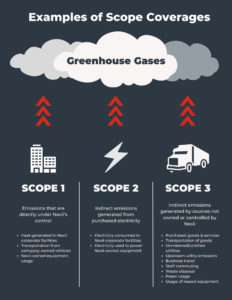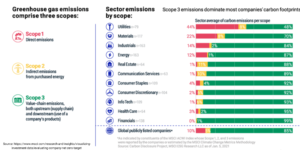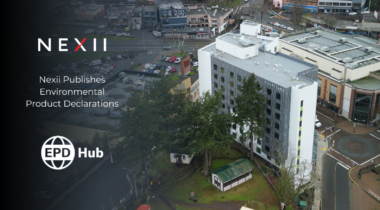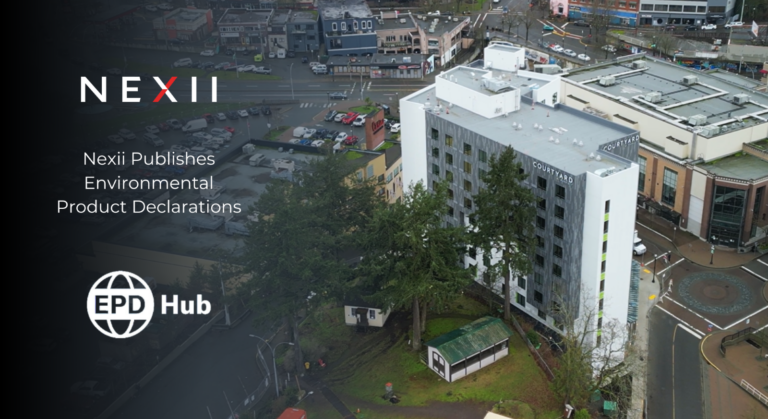
Zosia Brown, PhD, is Nexii’s Vice President, Sustainability. Her notable past roles include Head of Sustainability at Woodland Park Zoo in WA, and Associate with BuroHappold.
Zosia’s PhD in Resource Management Environmental Studies focused on green building performance and post-occupancy evaluation. She brings over 15 years’ experience in driving sustainable change and environmental policy in organizations across North America and Europe to Nexii. Zosia’s deep and consistent focus on product performance, carbon impact of operations, zero waste and climate resilience are at the heart of Nexii’s operations. Together with teams from across the company, Zosia leads Nexii’s environment, social and governance (ESG) strategy underpinning our mission to build a vibrant future for people and planet.
To avoid the devastating effects of climate change, an increasing number of corporations and countries worldwide have pledged to decrease emissions and move toward net zero carbon targets. In 2019, net zero pledges covered just 16% of the global economy; by 2021, nearly 70% had committed to a net zero by 2050 pledge. Almost half of the world’s largest 2000 companies now have some kind of climate target in place and over a third have made net zero commitments.
Pledges and commitments need substance to move the dial on climate pollution and avoid greenwashing. Net zero commitments accompanied by substantial short-term and long-term emissions reduction targets, covering multiple sources of emissions, and backed by detailed plans will ensure organizations are on track to accelerate the transition to a low-carbon economy.
What is Net Zero?
From a planetary perspective, net zero greenhouse gas (GHG) emissions describe the scenario when the atmosphere is balanced, no longer building up greenhouse gases, in other words, the quantity of greenhouse gas emitted into the atmosphere equals the amount absorbed by natural sinks (oceans, forests, and agricultural soil).
Companies that target net zero commit to:
- peaking emissions – to curb emissions growth
- driving absolute emissions reductions and
- neutralizing all GHG emissions that they cannot reduce directly through investment in protecting and growing natural carbon sinks and/or carbon removal
These commitments should be achieved by a specific date that is in line with a 1.5°C world.
Science Based Targets
The Science Based Targets initiative (SBTi) has become the ‘gold standard’ of net zero commitments, where businesses track and measure emissions in line with climate science. By offering a robust framework for setting net zero targets, the SBTi ensures companies meet consistent standards in defining their pathway to achieving net zero goals, encompassing:
 Scope 1 – direct emissions from sources owned or controlled by a company
Scope 1 – direct emissions from sources owned or controlled by a company
Scope 2 – indirect emissions associated with the purchase of electricity, heating or cooling
Scope 3 – indirect emissions that occur because of a company’s activities within the value chain, such as emissions from purchased goods and services, transportation of goods, business travel and commuting, leased assets and franchises, and waste disposal.
‘Scopes’ are categorizations or grouping of greenhouse gas emissions used for accounting purposes, as defined by the Greenhouse Gas Protocol. Of the three major Scopes, for many companies, Scope 3 represents the majority of their GHG emissions.
Near-term Science-based targets (SBTs) are interim emissions reductions (5 to 10 years) towards a long-term net zero goal. For all SBT participating companies, net zero targets must cover Scopes 1 and 2. Scope 3 requirements depend on the company size and fraction of total emissions represented by the value chain. For larger companies, near-term Scope 3 targets should typically cover 2/3rd of emissions, extending for long-term targets to 90% coverage (by 2050 at the latest). Strategies for Scope 3 target-setting can include a combination of:
Absolute targets: The company commits to reducing absolute GHG emissions from a base year
Intensity targets: The company commits to reducing GHG emissions per physical unit (e.g. of product, tons of material, etc.) or dollar of added value.
Engagement targets: The company commits that a percentage of customers/suppliers will set their own SBTs covering organizational emissions
Tracking data for Scope 3 emissions is often one of the most challenging aspects of GHG accounting. It is a difficult 
undertaking, often avoided or ignored, and for many companies, this means that up to 90%+ of their carbon emissions aren’t accounted for.
Despite the barriers, if done well, Scope 3 emissions tracking can lead to important insights, such as:
- Identifying supply chain GHG emissions hot spots
- Finding key cost reduction opportunities
- Identifying opportunities to drive down leased facility emissions
- Prioritizing local sourcing of goods to reduce transportation emissions
- Improving the embodied carbon of products
- Engaging employees in sustainable commuting and hybrid work
- Influencing the supply chain towards setting their own net zero targets
Why commit to Net Zero?
In addition to the imperative of driving down climate pollution, there are several further reasons companies should consider committing to net zero:
Collaborating with companies committing to net zero is good business
Supply chain GHG emissions of large corporations can be as much as their operational emissions. As a result, many companies are looking to their supply chains to move towards their net zero goals.
 The Sustainable Purchasing Leadership Council (SPLC), whose members include Microsoft and Salesforce, recognize that procurement is on the frontline of sustainability impact and that, through sustainable purchasing, organizations can exercise their influence for positive change.
The Sustainable Purchasing Leadership Council (SPLC), whose members include Microsoft and Salesforce, recognize that procurement is on the frontline of sustainability impact and that, through sustainable purchasing, organizations can exercise their influence for positive change.
Microsoft, for example, asks its suppliers to adhere to their Supplier Code of Conduct which includes requirements to allow Microsoft to track and reduce their Scope 3 emissions. Prospective suppliers must provide: 1) a CDP supply chain rating for emissions, climate-related risk, and water performance, 2) an Environmental, Social and Governance (ESG) report with Global Reporting Initiative (GRI) metrics, and 3) a 3rd party ESG rating such as Sustainalytics/MSCI/ESGI.
Setting net zero targets aligned with globally-agreed climate goals sends a strong signal to existing and prospective clients about a joint vision for and commitment to a sustainable future.
Government regulation of emissions reduction
Many governments will continue to regulate net zero in the coming years to encourage and incentivize businesses to drive down emissions. Europe introduced the Corporate Sustainability Reporting Directive (CSRD) in 2021 which mandates rigorous standards around sustainability impact, risks and opportunities in line with limiting global warming to 1.5 degrees C. In the same year, the US Securities and Exchange Commission’s (SEC) proposed Climate Disclosure rules, emphasizing investor-focussed risk and requiring public companies to provide consistent and transparent reporting on their climate activities.
And just in time to help offset capital earmarked by companies to deliver on their emissions reduction goals, the Inflation Reduction Act – the US government’s recent landmark climate legislation – provides $369 billion in climate-related spending for clean energy, carbon capture and decarbonization.
With net zero goals and plans in place, organizations can take advantage of such incentives as well as be well-prepared on the regulatory front.
Brand reputation and investor dollars
Companies with strong sustainability and climate commitments are attractive to both investors and employees.
Despite recent turbulent times, sustainable funds continue to grow in the US. According to Blackrock, changing societal preferences will give sustainable assets a return advantage for years to come.
This is especially true for younger generations – future purchasers, employees, and investors – for whom climate anxiety is on the rise and life decisions are increasingly shaped around sustainability values. An organization demonstrating authenticity and purpose backed by solid commitments is better placed to attract long-term investors and employees.
Towards a Net Zero future
Scientists and global leaders agree that climate change is arguably the greatest and most urgent challenge modern humans have ever faced. Science-based net zero targets provide a clear framework for the necessary low-carbon economic transition currently underway. The more companies that commit to net zero, the sooner we can shape a liveable future.
In my next blog, we’ll discuss Nexii’s net zero target, what we’ve learned from establishing our GHG baseline and where we are going from here.





